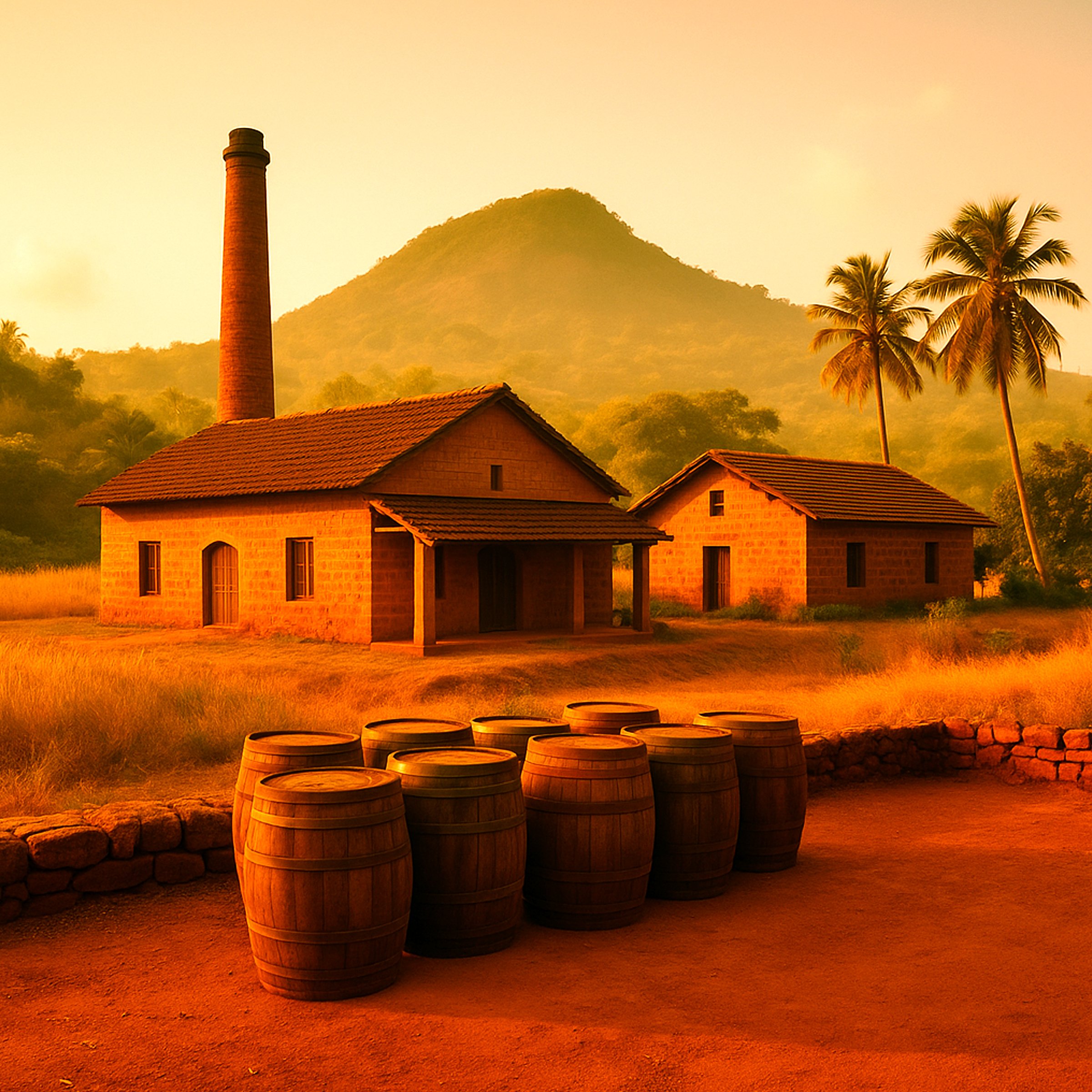OTHER WORLD WHISKIES
Global Craft, Local Character
Beyond the five traditional powerhouses—Scotland, Ireland, the U.S., Canada, and Japan—a new generation of distillers around the globe is redefining what whisky can be. From the tropics of Taiwan to the forests of Sweden and vineyards of Australia, these world whiskies embrace local ingredients, climate, and culture to create bold, distinct expressions. Whether inspired by tradition or pushing the boundaries of the category, these whiskies offer exciting opportunities for exploration and discovery.
Key Characteristics
Other world whiskies vary widely in style, grain, and technique, but often reflect regional climate, local materials, and innovative aging methods. Many are single malts or blends, and may use unconventional casks, grain types, or aging environments to achieve unique results.
Style
Single malt, blended malt, grain whisky, peated and unpeated styles, wine- or rum-cask finishes
Body
Light to full, depending on climate and style
Texture
Ranges from soft and silky to rich and powerful
Primary Grains
Malted barley, corn, wheat, rye, and local grains like millet or sorghum
Typical Flavors
Stone fruit, tropical fruit, honey, malt, vanilla, baking spice, wood smoke, cocoa, tea leaf, red wine tannin
Origin & History
Many of these whisky-producing countries are relatively new to the scene—most began serious distilling in the late 20th or early 21st century. While inspired by Scotch or Irish methods, their whiskies reflect regional identity: warm climates accelerate aging in India and Taiwan; Scandinavian distillers use native woods and local peat; and countries like France and Australia incorporate their rich wine heritage through barrel aging and finishing. Despite their youth, many of these distilleries have already won international acclaim.
How It’s Made
Production methods often mirror traditional whisky techniques—mashing, fermentation, distillation, and oak maturation—but with modern twists. Distillers frequently experiment with:
Local Grains And Yeasts
Unconventional Casks
(e.g., red wine, sherry, Cognac, rum)
Innovative Aging Conditions
(tropical, alpine, coastal)
Native Wood Types
(e.g., mizunara, Swedish oak, French acacia)
Notable Styles
Each region brings its own personality to whisky-making.
Taiwan
Kavalan
Rich, fruity, fast-aging; tropical heat accelerates maturity
India
Amrut, Paul John
Bold, spicy, peated and unpeated styles; hot-climate aging
Australia
Starward, Limeburners
Wine-cask aged, fruit-driven, grain-forward
France
Armorik, Bellevoye
Elegant malt whisky; often finished in Cognac or wine barrels
Sweden
Mackmyra
Forest-infused; light peat, herbal, aged in Scandinavian wood
Germany
Slyrs
Precise, clean malt whiskies; alpine water and barley
Israel
Milk & Honey
Mediterranean climate; wine-cask finishes, balanced richness
South Africa
Three Ships, Bain’s
Corn-based and malt whiskies with soft oak and spice
New Zealand
Cardrona, Thomson
Clean, expressive; often cask-forward
Wales
Penderyn
Light, fruity single malt with a creamy finish
Cocktail Pairings
These whiskies shine best when their unique character is allowed to speak. Use in refined or creative cocktails that highlight fruit, spice, or wood-driven flavors.
Classic Cocktails
With a twist
Old Fashioned with Indian malt, Whisky Highball with Swedish whisky, Manhattan with French blend
Modern Mixes
Wine-Cask Whisky Sour, Ginger & Honey Mizunara Highball, Cocoa-Chili Old Fashioned
Food Pairings
World whiskies pair well with bold global flavors, aged cheeses, and local-inspired cuisine.
With Savory
Grilled lamb, curry-spiced dishes, mushroom risotto, duck with plum sauce
With Cheese
Manchego, washed-rind cheeses, Alpine styles, triple cream with fruit preserves
With Dessert
Fig tart, salted caramel, dark chocolate, ginger cake, almond pastries
How to Serve It
Glassware
Glencairn, copita, or wide tumbler to focus unique aromas
Temperature
Room temperature for sipping; a splash of water may reveal complexity
Storage
Store upright in a cool, dark place. Open bottles are stable for several years when sealed well.
Fun Fact
Kavalan in Taiwan, founded in 2005, gained international acclaim in less than a decade, winning “World’s Best Single Malt” in 2015 and putting Taiwan firmly on the whisky map.
Try This If You Like
Japanese whisky
For balance and refinement
Scotch single malt
For malt-forward styles
Experimental American or craft whiskey
World wines with regional character
Bar None
The Most Perfectly Curated
Bar-In-A-Box
A Most Welcoming Gift


